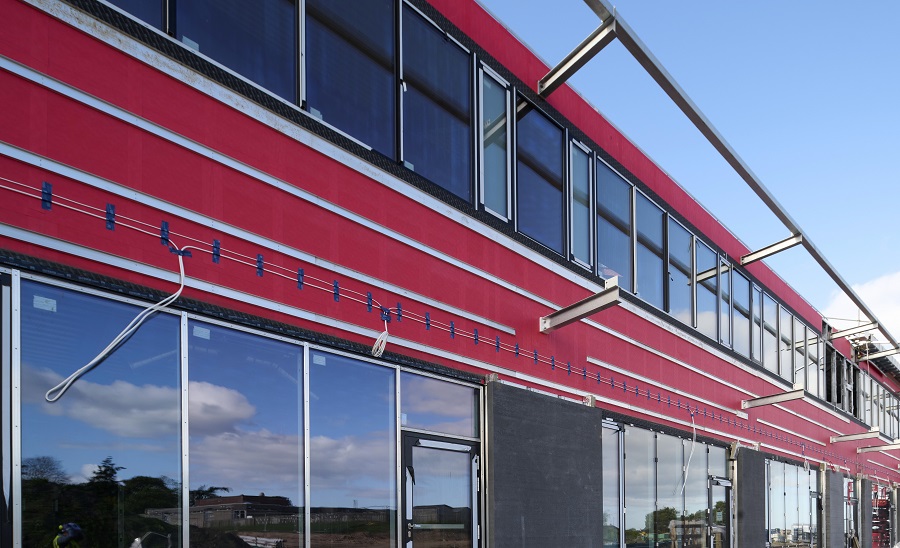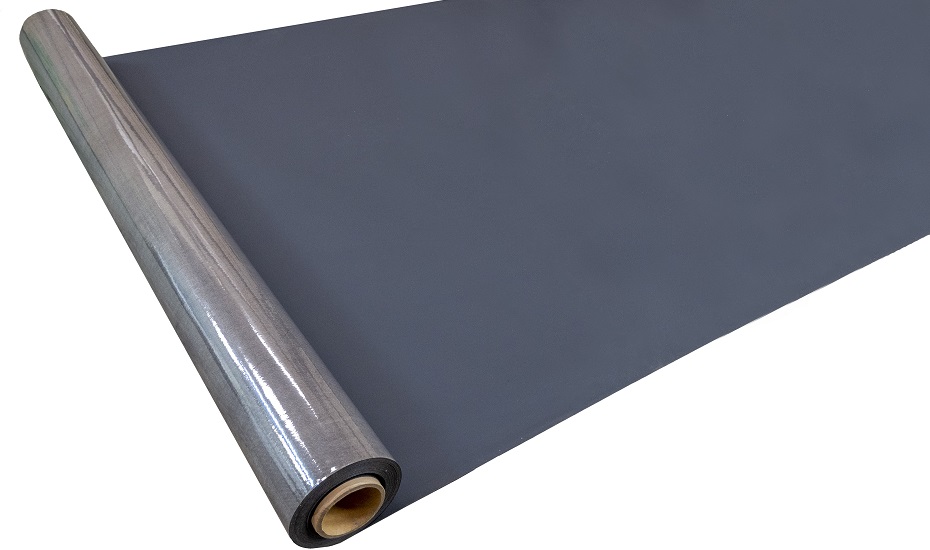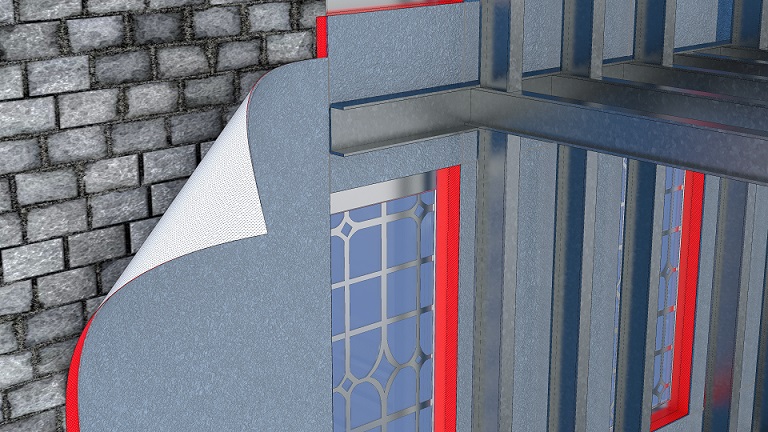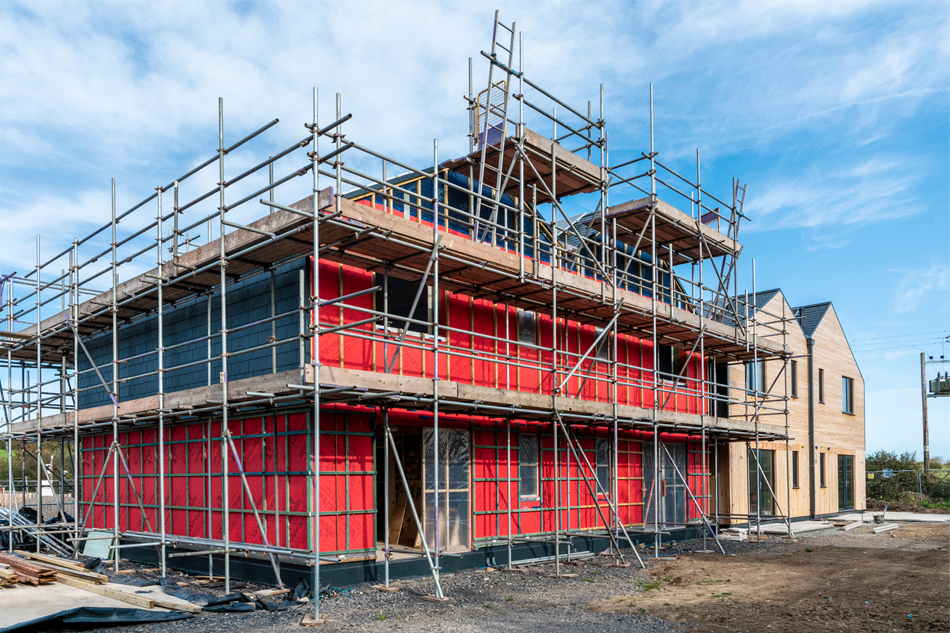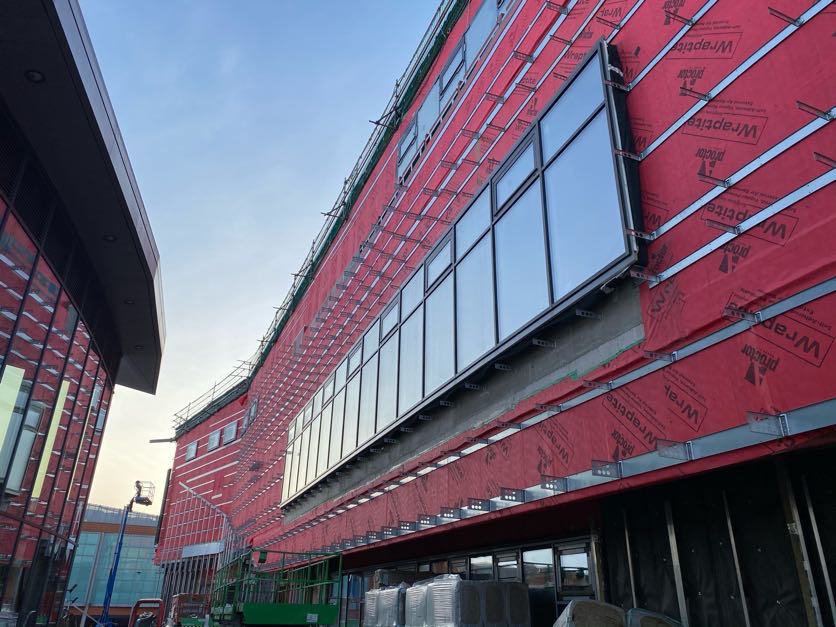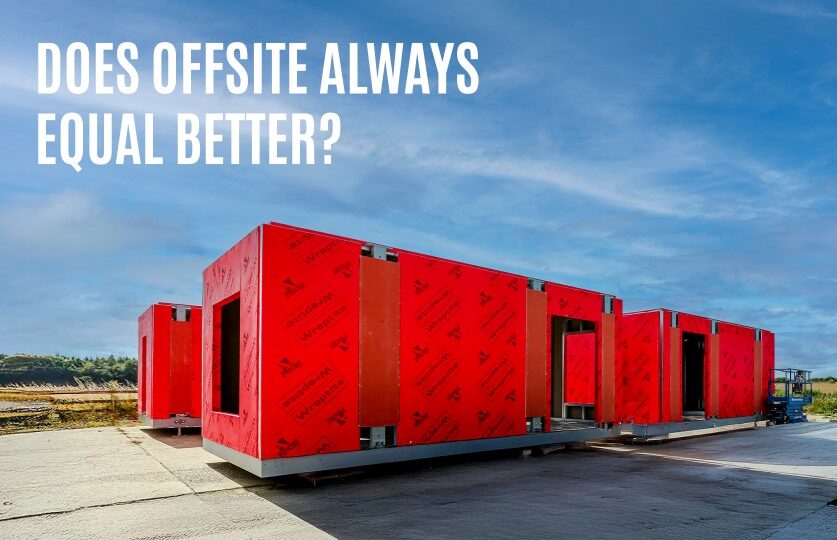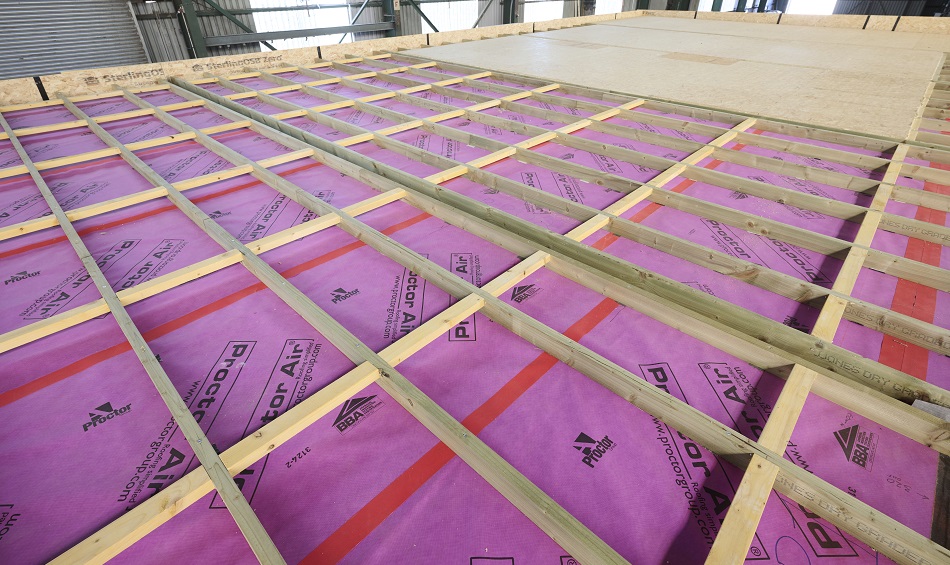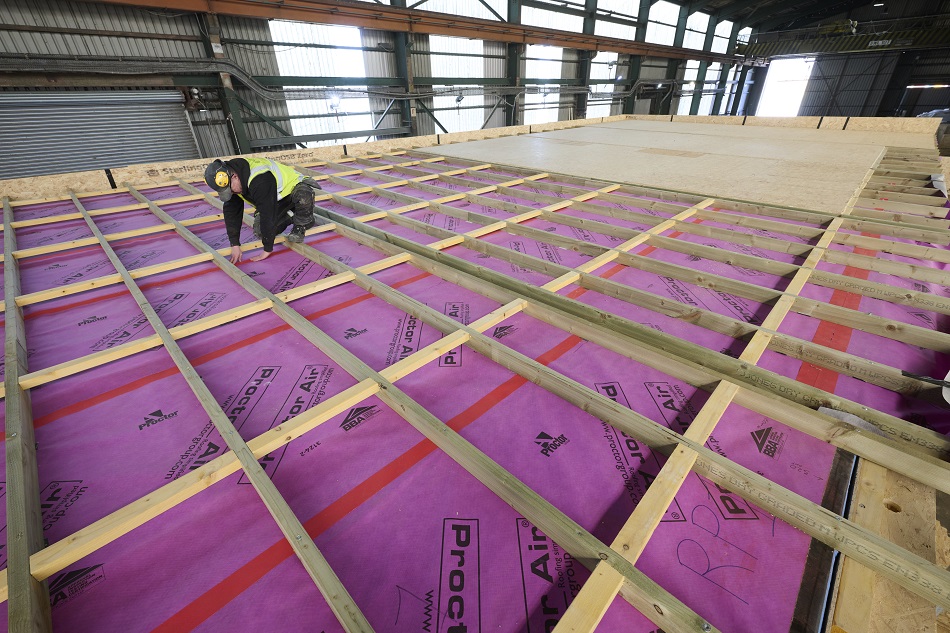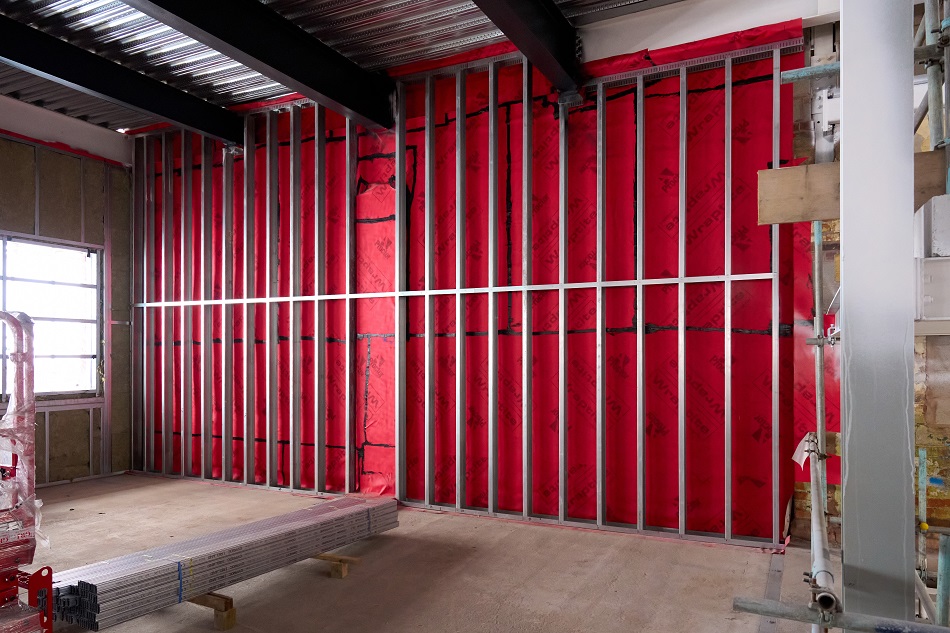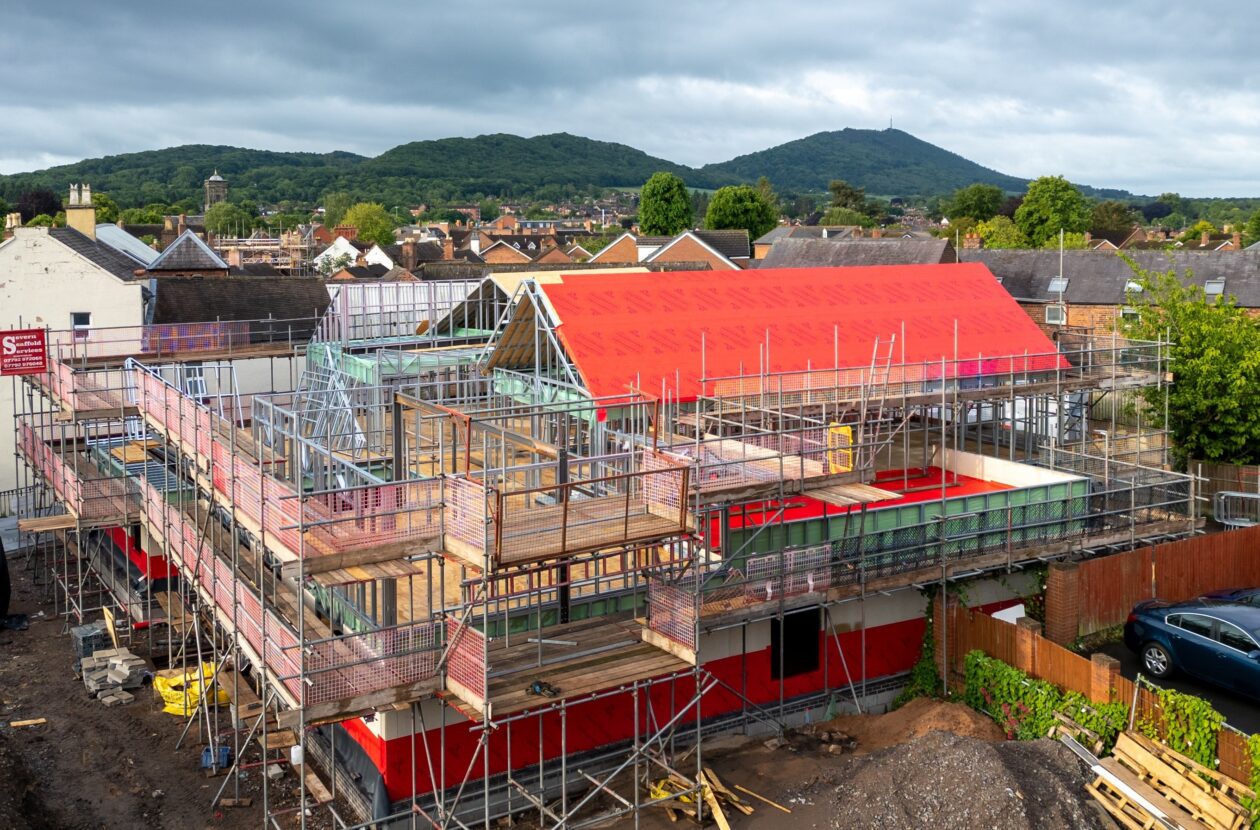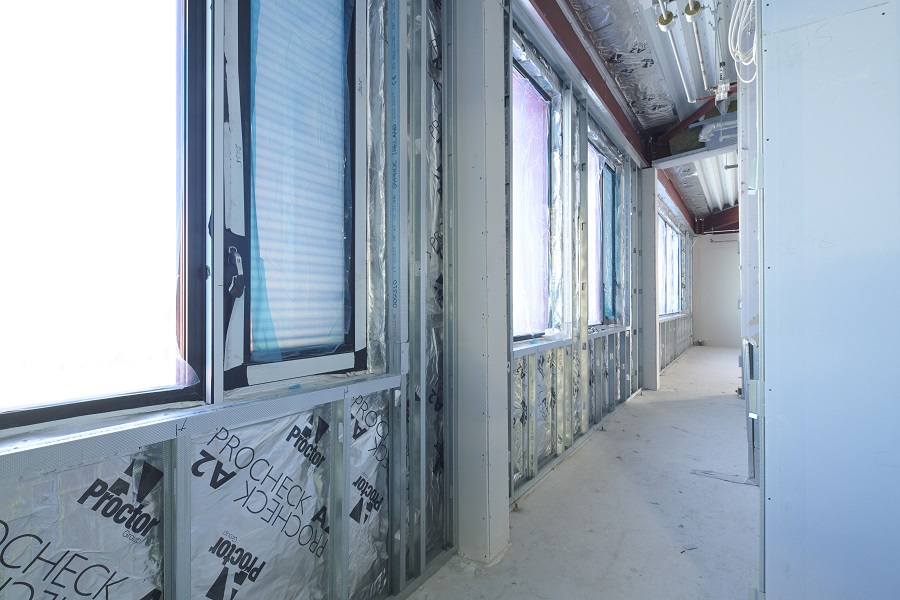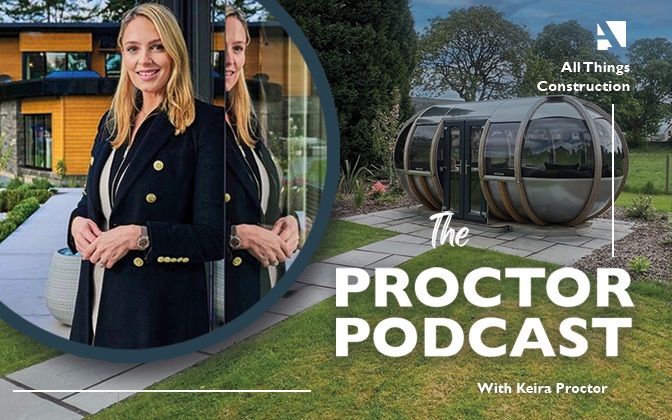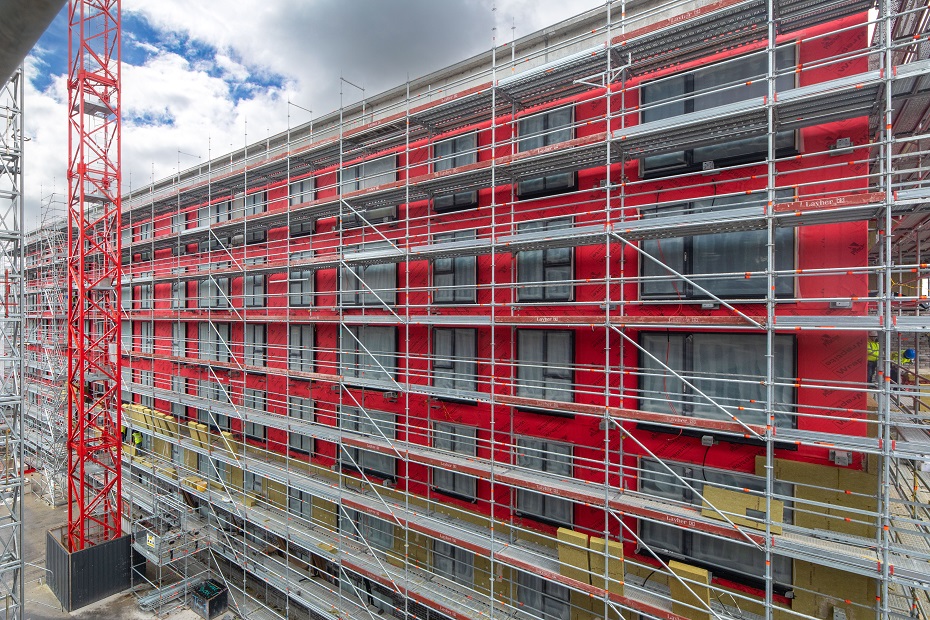Keira Proctor (KP): Is Passivhaus still quite niche or is it building momentum in the UK?
Adam Salt (AS): There’s a misconception that it’s only used for self-build projects and one-off houses. There are lots of bigger projects and commercial buildings. Look at St Sidwell’s Point in Exeter, the world’s first Passivhaus leisure centre. Now we have Passivhaus high rises in London, and lots of Passivhaus schools in Scotland.
My wife is a teacher and says her school is always cold. I remember being cold at school when I was growing up and she tells me things haven’t changed. A comfortable indoor environment for learning is important, and the cost of heating many of these schools is very high. The push towards Passivhaus is crucial.
Pamela Howat (PH): I remember school as being one of two extremes: freezing cold, or so hot you couldn’t concentrate. We’re involved in a lot of Passivhaus schools and they’re phenomenal buildings.
AS: Passivhaus encourages simple forms, but there’s a definite misconception that all Passivhaus buildings are boxy. We’re seeing projects push the boundaries with design and create more visually interesting buildings.
PH: That’s only going to develop as people get more used to building to and achieving those levels. The sky is the limit for what Passivhaus can deliver.
AS: The principles are longstanding. Making buildings airtight or well-insulated is not new. It’s about getting to those higher standards of performance.
PH: We talked to a main contractor about this in one of our webinars, and it was the same on St Sidwell’s Point. The training that goes into giving the installers the skills, and tracking all of that, fits with the golden thread concept and quality assurance. There’s really exciting stuff developing in this area, and the whole construction industry can learn from it.
AS: One of the biggest challenges to achieving better performance is different contractors not working together. Seeing that communication on Passivhaus projects shows where performance improvements are achieved.
KP: What are the cost implications of Passivhaus for the public sector?
PH: Larger scale commercial buildings already have significant costs. Any additional upfront cost will be quickly absorbed through rapid payback in the costs of heating, water supply, and any cooling.
AS: The biggest challenge is budgeting for a project with ever-changing material prices. A lot of products might be specialist or non-standard. But again, as more of these projects are completed, things will become more standard and commonly specified.
The great thing about our industry is innovation – people will look at what is delivered and work out ways to do it more simply. We did it with Wraptite®, making it self-adhered yet vapour permeable to give the best chance of achieving Passivhaus levels of airtightness by moving the airtightness line externally.
PH: Even if you don’t go passive, current and future regulations require airtightness and low U-values. The gap between the two approaches is closing and soon it will be negligible.
AS: Modular is a great solution for Passivhaus. You can make a module airtight much more easily than having to do an entire building on site.
PH: It doesn’t even have to be a full module. On one site we’ve been involved with, they’ve used prefabrication to make the sheathing panels, applying Wraptite® offsite. With the panels in place, they’ve got a building that’s progressing on site and which is already a long way to being airtight.
KP: What advice do we have for local governments?
AS: Passivhaus is nothing to be scared of. The principles are not alien to the construction industry. More and more people are making the step, and there’s no reason not to do it now.
PH: A lot of decisions are controlled by funding. People are worried what it will mean for future funding if they’re not successful in achieving the standard. It’s about engagement, trusting to the process, and working with products that can deliver your target with a margin of error.
KP: Make sure research is done into funding streams that support achieving Passivhaus or better.
AS: Work with suppliers and contractors to get them involved with your projects and address the performance gap. Everybody is supportive of training and education, and we’re getting more hands on with a lot of our projects.
Watch the full conversation on the A. Proctor Group YouTube channel, or listen wherever you get your podcasts.
Request a Sample
Technical Advice
CAD Detail Review
U-Value Calculation
Book a CPD
Specification Check
